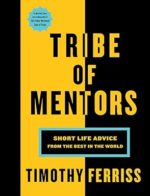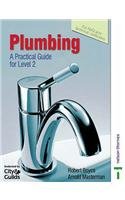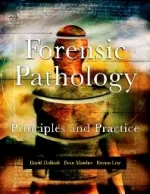-
Biological Bases of Human Behavior
KShs 7,420.00The Biological Basis of Human Behavior accomplishes what numerous introductory books have failed to do: present an evolutionary explanation of why it is we do what we do. This comprehensive book brings together a diverse number of traditionally separate disciplines including paleoanthropology, psychology, and sociology in its attempt to understand human traits. Rich in controversial topics, this text integrates subjects such as paleontology, speech, the structure of the brain, Eve, and the rather odd way in which humans reproduce. Written as a narrative, this excellent learning tool relates modern behavior to the past environments, stresses, and challenges still evident in the modern human world. For anyone interested in the biological bases of human behavior; psychology; or anthropology.
-
Disney Pixar Onward Ultimate Colour Book
KShs 495.00Bring the magic of Disney Pixar’s Onward to life with the Ultimate Colour Book — packed with exciting scenes and characters for kids to colour and enjoy endless creative fun.
Get ready for action as you join brothers Ian and Barley on an extraordinary colouring quest! Bursting with copy colouring, amazing part-coloured pictures to complete, as well as awesome poster pages, this book is full of magical fun.
-
Attributing Development Impact: The qualitative impact protocol case book
KShs 6,440.00Explore real-world applications of the Qualitative Impact Protocol (QuIP) in Attributing Development Impact: The Case Book. Learn how this innovative approach uncovers causal links, amplifies voices of beneficiaries, and strengthens evaluation in international development.”
Substantiating cause and effect is one of the great conundrums for those aiming to have a social impact, be they an NGO, social impact investment fund, or multinational corporation. All face the same quandary: how do you know whether, or how, you contributed to an observed social change? A wide range of impact evaluation methodologies exist to address this need, ranging from informal feedback loops to highly elaborate surveys. But generating useful and credible information in a timely and cost-effective way remains an elusive goal, particularly for organizations working in complex, rapidly evolving and diverse contexts. Attributing Development Impact brings together responses to this challenge using an innovative impact evaluation approach called the Qualitative Impact Protocol (QuIP). This is a transparent, flexible and relatively simple set of guidelines for collecting, analysing and sharing feedback from intended beneficiaries about significant drivers of change in their lives. Innovative features include the use of ‘blindfolded’ interviewing to mitigate pro-project bias, and the application of a flexible coding system to make analysis and reporting faster and more transparent. The QuIP has now been used in seven countries (Ethiopia, India, Malawi, Mexico, Tanzania, Uganda and UK) with activities to promote food security, rural livelihoods, factory working conditions, medical training, community empowerment and microcredit for house improvement. This book includes comprehensive ‘how to’ QuIP guidelines and practical insights based on case studies from these countries into how to address the numerous methodological challenges thrown up by impact evaluation. Essential reading for evaluation specialists within NGOs, governments and donor agencies; social impact investors; community development practitioners; and researchers and students interested in evaluation methodologies.
-
Cases and Materials on Insurance Law
KShs 34,760.00This Ninth Edition contains extensive updates, with new cases relevant for students anxious to acquire practical knowledge that can be quickly put to use when they enter the profession.
-
Why Do Chimps Kiss? (First Questions And Answers)
KShs 695.00Explore fun facts about monkeys and apes in this engaging book, including the question: why do chimps kiss? Perfect for young readers!
Discover the answer to lots of brilliant questions about monkeys and apes! Easy-to-read text makes this book ideal for young readers, while cartoons and quizzes keep learning fun and interactive.
-
Tribe Of Mentors: Short Life Advice from the Best in the World
KShs 1,695.00Among other things, you will learn:
More than 50 morning routines — both for the early riser and those who struggle to get out of bed.
How TED curator Chris Anderson realized that the best way to get things done is to let go.
The best purchases of $100 or less (you’ll never have to think about the right gift again).
How to overcome failure and bounce back towards success.
Why Humans of New York creator Brandon Stanton believes that the best art will always be the riskiest.
How to meditate and be more mindful (and not just for those that find it easy).
Why tennis champion Maria Sharapova believe that “losing makes you think in ways victories can’t.”
How to truly achieve work-life balance (and why what most people tell you it isn’t realistic).
How billionaire Facebook co-founder Dustin Moskovitz transformed the way he engages with difficult situations to reduce suffering.
Ways to thrive (and survive) the overwhelming amount of information you process every day.
How to achieve clarity on your purpose and assess your priorities. -
ICD-10 Volume 2: International Statistical Classification of Diseases and Related Health Problems : Instruction Manual
This first volume contains the classification at the three and four-character levels, the classification of the morphology of neoplasms, special tabulation lists for mortality and morbidity, definitions, and the nomenclature regulations. The volume also reproduces the report of the International Conference, which indicates the many complex consideration behind these revisions.
-
-
Plumbing: A Practical Guide for Level 2
Plumbing: A Practical Guide for Level 2 is an essential handbook for learners, apprentices, and trainees working towards their Level 2 plumbing qualification. Written in clear, accessible language, it covers all the key skills, knowledge, and safety practices required in modern plumbing.
This practical guide takes you step by step through fundamental topics such as pipework systems, hot and cold water supply, sanitation, central heating, and maintenance. With diagrams, worked examples, and real-world case studies, it helps build confidence in both theory and hands-on application.
Whether you’re starting your career in plumbing, refreshing your knowledge, or preparing for assessment, this book provides:
Comprehensive coverage of the Level 2 plumbing curriculum
Practical guidance on tools, techniques, and safe working practices
Clear explanations supported by illustrations and activities
Essential tips for workplace readiness and professional standards
Ideal for students, apprentices, and training centres, this is the go-to resource for mastering the skills and understanding needed to progress in the plumbing trade.
-
Forensic Pathology Principles and Practice
KShs 60,000.00Forensic Pathology is a comprehensive reference that uses a case-oriented format to address, explain and guide the reader through the varied topics encountered by forensic pathologists. Developed in response to a severe void in the literature, the book addresses topics ranging from medicolegal investigation of death to death scene investigation, forensic autopsy, and artifacts of resuscitation as well as complications of medical therapy, forensic osteology, forensic odontology, forensic photography, and death certification. The book includes various types of cases, including sudden natural death, asphyxia, motor vehicle collisions, death in custody, child abuse and elder abuse, acute psychiatric and emotional deaths, and pregnancy. It contains sample descriptions of pathological lesions which serve to aid pathologists in reporting their findings to law enforcement agencies, attorneys, and others involved in investigations of sudden death. The concepts outlined in the text are beautifully illustrated by large, colorful photographs. There are also “Do and Don’t” sections at the end of each chapter that provide guidance for handling the types of cases examined. This work will benefit not only experienced forensic pathologists, but also hospital pathologists who occasionally performs medicolegal autopsies; doctors in training; medical examiners; law enforcement personnel; crime scene investigators; attorneys; and fellows and students of the medical sciences.










